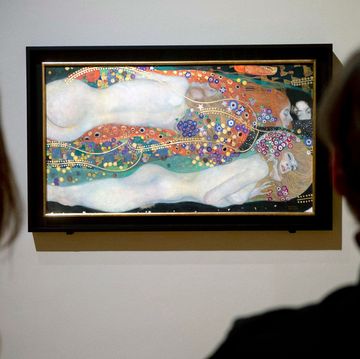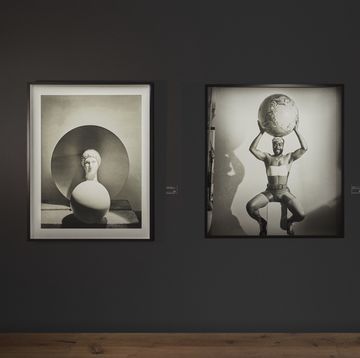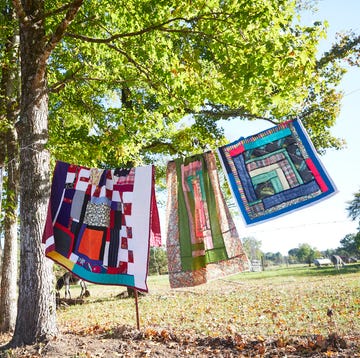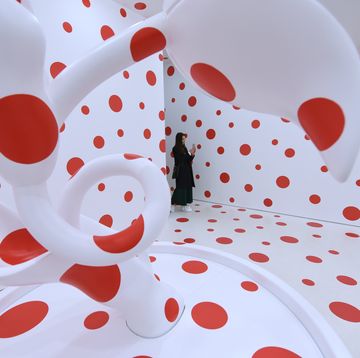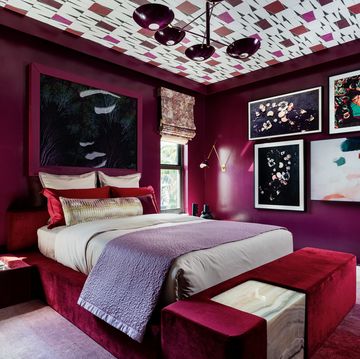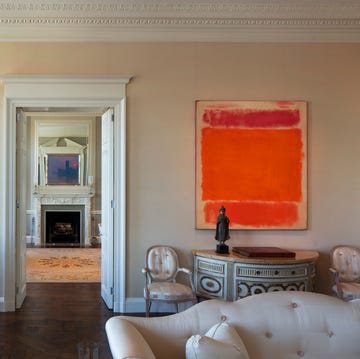A new piece of original art can be a hefty investment. And much like the feeling many of us experience when attempting to pick out a vacation destination or bottle of wine, choosing the perfect piece of art to commit to from an overwhelming array of alternatives can feel daunting.
Take a deep breath and remember: “Anyone and everyone can enjoy collecting art. You deserve to live with art on the walls. When you open yourself up to the art world and learn more, your life will become richer,” says Liz Lidgett, the founder and owner of Liz Lidgett Gallery in Des Moines, Iowa.
If you’re feeling bogged down about where to start (which is totally understandable, considering the countless options available online and at local retailers), consider working with a gallery, designer or curator you trust, Lidgett advises, “because if they represent or support that artist, it shows they believe in the artist’s work and their career trajectory.”
More From Veranda

That being said, no one can make the final choice but you.
“When you feel emotionally invested in a piece of art, the financial investment is a much easier pill to swallow. When I purchase art, I always envision passing those pieces down to my children and telling them the story behind the piece, where I was when I purchased it, what it means to me, what I learned about the artist,” adds Lauren Robbins, owner of the Augusta, Georgia-based residential interior design firm Lauren Robbins Interiors.
In addition to working with an art expert in your neighborhood, you can also peek online at trusted retailers like Saatchi Art, Singulart or Lidgett’s virtual gallery to narrow down your options.
7 Questions to Ask Yourself Before You Buy a Piece of Art—Plus, How to Know if It's "the One"
No matter where you search and shop, asking yourself the questions below along the way can help make the choice to “put a ring on it”—in other words, run your credit card number to buy it—much easier.
Does it represent how you want to feel in that space?
One of the first questions Lidgett asks her clients who are on the fence about a certain piece: “How do you want to feel in the space? Does this artwork accomplish that?” Optimistic, serene, inspired, luxurious, nostalgic; there’s no wrong answer.
Many people worry too much about art “matching" their decor, such as a rug, wall color or overall vibe, says Jenn Marder, co-owner (with husband Mitch) of Pepper Home Decor in Wyckoff, New Jersey. A wall color or pillow set can be changed fairly easily, though, and those aesthetic details will likely change far more frequently than your art collection will.
Rather than fretting about being super coordinated, “I would suggest allowing your art to stand on its own. If you choose something you love, it will go with you from place to place and you'll always find a place for it,” Marder says.
Does it make you feel something?
Green flag alert: When you first saw the piece, did you feel something immediately? Perhaps joy? Awe? Wonder? Energy? Some unexplainable hypnotic pull? These are all excellent signs that this piece will be a treasure for many years to come.
“Whether a beautiful emotion or a strong response, if you instinctively react to a piece when you first see it, the odds are it will be hard for you to walk away and forget about it,” Robbins explains.
Art is subjective, and art should move you. Try not to get too swayed by what others say is "trendy" or a good investment, since you're the one who has to live with it every day.
“Buying art should be a personal experience, so I always recommend that people buy what they truly love. Rather than focusing on what someone else has or what you might’ve seen on TV or in the pages of a magazine, go to an exhibit or to a local gallery,” recommends Jelena Restovic James, the director of fine art at New Orleans Auction Galleries in New Orleans, Louisiana. “You will inevitably form a connection with a work (or a few)—and that’s a connection that can’t be explained, a sign that this work of art is very much yours.”
Does it evoke a certain memory?
Perhaps it’s a vacation, childhood, your family; if art makes you think of a favorite moment or place that holds a fond place in your heart, that’s a very good sign, Lidgett says.
“I typically purchase art when I travel because of the happy memories it evokes when I see the piece in my home or office. Art that calls up memories is a great investment as they make great conversation pieces and give a glimpse into the story of our lives,” Robbins adds.
Does it add to your home’s story?
Though you shouldn't buy art just to match the colors or design of your home, occasionally there are pieces that make a room feel more connected to the rest of the house or bring in a sense of place.
“In our interior design work, we have found pieces for clients that have been the glue that pulls an entire room together. Our clients fall in love with the piece because of its ability to form a cohesive story in their space,” Robbins says. That doesn’t mean it needs to stay in the same spot forever, though. “If you can envision the piece in numerous places in your home, you know it will blend effortlessly with your style and taste, making it easy to place no matter where you live for years to come.”
Is it sized right?
Understanding the scale of a certain piece within a room is essential before you commit, Robbins says. Look at existing architectural details in your home as guidance on appropriate scale. For example, if you want to hang a piece above a mantel, you’ll want to ensure it doesn’t overwhelm or outstretch the mantel width, so you can still place decorative pieces on either side of the art.
“Framing is also key to give art even more impact. Often, canvases are stretched but unframed, leaving them to feel a bit unfinished. Playing with the style and framing of a piece will add an entirely new dimension,” Robbins explains. “Have fun with matte colors and scale to really set your piece of art apart and make it a conversation piece.”
A good rule of thumb from Lidgett: Seek out art that’s two-thirds of the size of the piece of furniture it’s being hung above.
Does it fit within your price range?
There’s no one standard definition of “good” art or if a specific piece is “worth it.” Art is everywhere, it’s subjective and it’s available at many varying price points. Our experts agree that as long as you love it and have the budget for it, it’s very worthy of the investment. This holds true no matter what the market, trends or economy has in store.
“My hope is that clients will buy art they love not because it will gain value. If it does become a great investment later on, then that’s just the cherry on top,” Lidgett says. “Many times, my clients feel an instant connection, but going through a checklist of questions like those here helps solidify your thoughts on a piece. For me, an artwork has to touch both the logical side of my brain—meaning that it fits in my space and my budget—while also touching the creative side by making me feel something special.”
Does it keep jumping back into your mind?
Knowing if a piece is “the one” boils down to an instinctive feeling, Robbins says. So tune in.
“I encourage my clients to pay attention to their instincts when walking through a gallery. If they feel drawn to a piece that pulls them back time and time again, that’s the ultimate sign,” she says.
It can be tempting to search outside of yourself for answers, especially if you’re new at investing in art. But there’s no need to second guess your gut instinct.
“You don’t need an art history degree to love art! Don’t set the bar too high to enjoy it,” Lidgett says. “The art world is for everyone, and you can love art no matter where you’re coming from.”
Read on for more art stories:
- These Are the 12 Best Contemporary Art Galleries in the World
- How to Start an Art Collection
- These Are the 10 Most Expensive Paintings in the World




